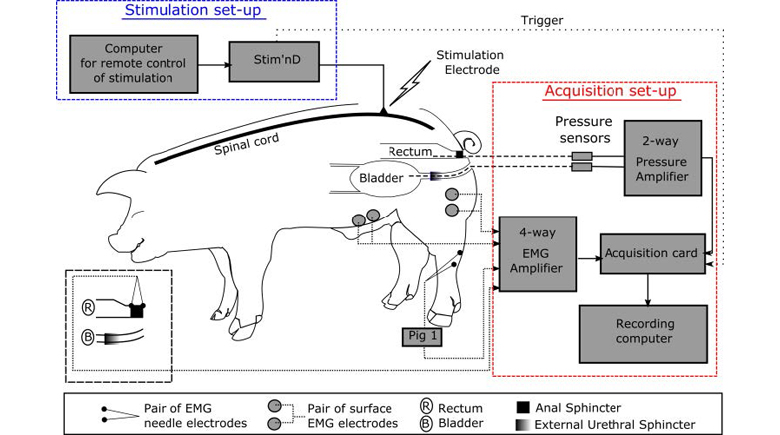
Nearly all spinal cord injured (SCI) individuals lose bladder control and are prone to kidney complications if intermittent catheterization is not applied. Electrical stimulation (ES) of the sacral anterior roots with an implantable neuroprosthesis is one means to restore continence and control micturition. However, only a small percentage of the SCI population benefits from this solution because of its drawbacks, e.g. section of sacral posterior roots with loss of spared sensitivity. There has been renewed interest in spinal cord stimulation in recent years, but most studies have focused on locomotion and only few have reported the impact on visceral functions. Moreover, even though the lumbosacral spinal cord is the location of many pre-cabled neural networks (involved in locomotion, bladder, bowel management etc.), the functional selectivity of spinal stimulations has never been investigated in detail. Here we present: i) a methodology designed to study lumbosacral epispinal-intradural stimulation selectivity, ii) preliminary results assessing the impact of epispinal stimulation on bladder and bowel functions in two domestic pigs, and iii) a comparison of these visceral responses with abdominal and lower limb activities. Our experiments resulted in selective bladder and rectal responses, i.e. without hind paw responses, thus reaffirming the rehabilitation potential of spinal cord stimulation.

